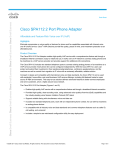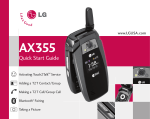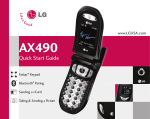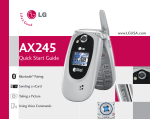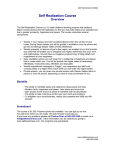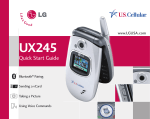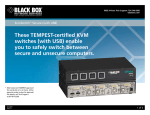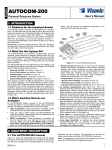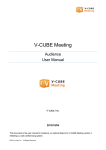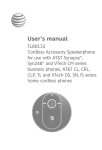Download Zebra RW 420 Lithium Ion Battery
Transcript
June 13, 2006 Technical Bulletin: Battery Management and Safety Practices for Lithium Ion Battery Packs Lithium ion (Li-Ion) technology is the state-of-the-art in DC energy storage and has been widely adopted to meet user demand for more power and longer operating times. Li-Ion technology, however, comes with a tradeoff. The design and manufacture of Li-Ion batteries has not yet reached a level that guarantees performance under all circumstances or that they will never overheat or out-gas. Zebra actively monitors the Li-Ion battery technology industry and we have become aware of many published concerns about Li-Ion batteries including batteries for laptop computers, cell phones, digital cameras, wireless speakerphones and numerous other products. Therefore, it is important to understand and follow proper and safe practices for (i) use, storage, age management and disposal, (ii) handling, and (iii) charging of Li-Ion batteries. Failure to follow safe practices may result in bodily injury and/or property damage. No other battery technology available at this time allows us to meet market and competitive requirements for operating times and label capacity for thermal printers. While our battery manufacturers have made significant improvements from a design and manufacturing process perspective, there are some practices that users of these batteries should follow to further reduce any residual risk of overheating and/or out-gassing. We strongly recommend that you implement the following battery management practices. Use, Storage, Age Management and Disposal 1. Only use genuine Zebra® battery packs in Zebra printers. 2. Our experience indicates that the incidence of failure may increase with battery service life due to the stresses of daily charging and discharging. We strongly recommend that Li-Ion batteries be replaced after one year’s daily service, or 250 charge-discharge cycles, whichever occurs first. 3. Li-Ion batteries have a shelf life in the unused state so you should charge unused battery packs at least once every six months. Any battery pack remaining unused and uncharged for more than 12 months should be replaced. 4. In the unused state, a Li-Ion battery pack may become unstable if the voltage drops below 4.6 volts. The printer will shut down before a battery reaches this voltage, but a battery may further self discharge below 4.6 volts if it is left in the discharged state for more than a few weeks. We recommend periodic use of a voltmeter to check such batteries before recharging. If the voltage of any battery pack drops below 4.6 volts, the battery pack should be replaced. 5. Keep battery packs and chargers away from combustible materials. 6. Do not store battery packs in temperatures exceeding 60ºC/140ºF. 7. Do not store the battery packs in direct sunlight. 8. Keep battery packs away from children. 9. Promptly and properly dispose of used battery packs according to local regulations for the disposal of batteries. • • Insulate the terminals with tape before disposal. Zebra voluntarily participates in the RBRC program. Call 1-800-8-BATTERY in North America, for information on recycling. Outside of North America, please follow local battery recycling guidelines. Technical Bulletin: Battery Management And Safety Practices for Lithium Ion Battery Packs June 13, 2006 Page 2 Handling of the Battery Packs 1. Immediately discontinue the use of a battery pack if, while using or storing it, the pack emits an unusual smell, feels too hot to hold in the palm of the hand, changes color or shape, or appears abnormal in any way. It is also recommended that people should immediately leave the area and you should contact your safety personnel to handle the situation. Unplugging the charger may not necessarily prevent an incident. 2. Care should be taken to avoid “shorting” the battery packs across the terminals or across other battery packs. This includes, but is not limited to, carrying them in a pocket that may contain loose change, paper clips, other battery packs or other conductive (metal) materials. 3. Dropping or other mistreatment of the battery pack may cause a fire or a chemical burn hazard. Allow a dropped battery pack to sit for at least a minute and, preferably, replace the battery. 4. Do not expose battery packs to water. Do not incinerate or expose battery packs to temperatures above 60ºC/140ºF. 5. Do not attempt to disassemble a battery pack or pierce the pack with a sharp object. 6. Damaged or leaking battery packs should be handled with extreme care. Personal injury may result from the mishandling of a damaged or leaking battery pack. 7. If leaking fluid gets into a person’s eyes, they should not rub the eye. Rinse the eye well with water and immediately seek medical care. 8. Keep battery packs away from children. Charging of the Battery Packs 1. Charge Zebra battery packs only with a genuine Zebra charger. Do not attempt to charge other types of batteries in the charger. 2. Please be sure to follow all of the safety guidelines supplied with the charger. 3. We recommend that Li-Ion batteries should be charged in an unoccupied area. 4. Do not charge battery packs near combustible or conductive materials. 5. Charge the battery packs in a well-ventilated room that does not exceed room temperatures of 45ºC/113ºF. 6. Turn the printer off if charging with a fast charger wall unit. 7. A fast blinking red light indicates that there is a fault condition in the battery; such battery should no longer be used. 8. As with any other electrical device, if overheating or burning odors are noticed during charging, people should immediately leave the area and you should contact your safety personnel to handle the situation. NOTE: Due to the large amount of energy that is contained in a Li-Ion battery, unplugging the unit may not necessarily prevent an incident.


